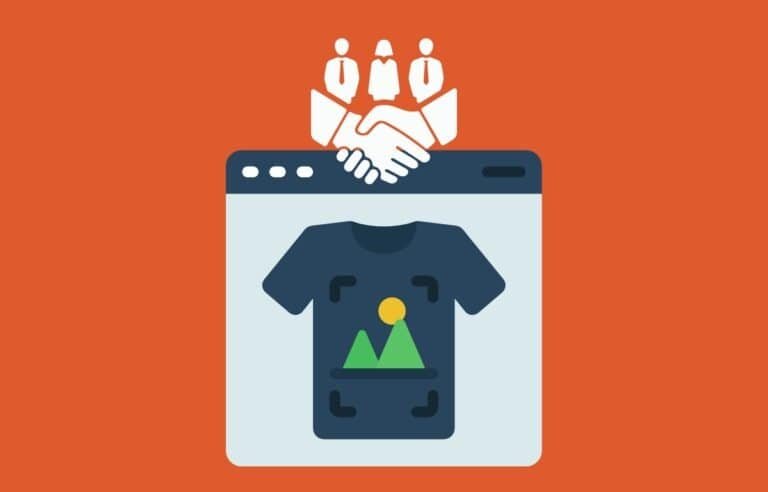Comment démarrer le marketing d'affiliation avec peu ou pas d'argent
Affiliate marketing is a low-risk, high-reward business model that anyone can start without having to invest a lot of money. While it’s true that affiliate marketing requires some initial investment, you can start with a small budget and gradually scale up as you earn more commissions.
In this article, we’ll take a deeper look at each step involved in starting affiliate marketing with little to no money.
Lire aussi : How to Use ChatGPT for Affiliate Marketing
Steps to Start Affiliate Marketing with No Money
Below’s how you can begin your affiliate marketing journey even without a lot of money.
Step 1: Choose a Niche or Product to Promote
The first step in starting affiliate marketing is to choose a niche or product to promote. The key is to select a niche that you are passionate about or have some expertise in. By selecting a niche that you are familiar with, you’ll be able to create content that resonates with your target audience and establishes you as an authority in the space.
Once you have identified your niche, you can start researching affiliate programs that are related to your chosen niche or product. Some of the popular affiliate networks that you can join include Amazon Associates, ClickBank, Commission Junction, and ShareASale.
Evaluate potential affiliate programs based on commission rates, product quality, and marketing materials provided. Consider starting with smaller, niche affiliate programs that offer higher commissions to maximize your earnings potential.
Step 2: Build a Website or Blog
Having a website is essential in affiliate marketing if you need to appear like someone trustworthy. You can choose a free website builder and content management platform such as WordPress.
However, having your own registered website makes you appear more professional. That’s why you need to invest in a good domain name and web hosting service. Domains usually cost around $10 a year and affordable hosting solutions for smaller sites exist too.
It’s important to also create high-quality content for your site. It’s through informative and engaging posts that most people will find your site online.
Make sure that you also optimize your content for search engines using relevant keywords in your niche. This will help your website rank higher in search engine results and attract more visitors to your website.
Note that there are ways to do affiliate marketing without a website too. These include creating YouTube videos, podcasts, or social media content that promotes the product (more on this is shared next in this article).
Step 3. Select a Method for Promotion
There are various cost-free ways to promote affiliate products and increase your chances of earning commissions. Here are some of the most effective ideas:
- Blogging: Create a blog in your niche and write high-quality content that is helpful and informative for your audience. You can include affiliate links in your blog posts that lead to products related to your content.
- Réseaux sociaux: Use social media platforms such as Facebook, Twitter, Instagram, and Pinterest to promote affiliate products. Share your affiliate blog or product links and write engaging captions to attract your followers to click on the links.
- Email marketing: Build an email list of subscribers who are interested in your niche and send them regular newsletters or promotional emails that include affiliate product links.
- Vidéos youtube: Create YouTube videos related to your niche and include affiliate product links in the description or in the video itself.
- Product reviews: Write or create videos that review the affiliate products you are promoting. Share your personal experience and highlight the features and benefits of the product to your audience.
Step 3: Join Affiliate Programs
Once your website or blog is up and running, it’s time to join affiliate programs. Sign up for the best affiliate programs that align with your chosen niche or product.
Use the affiliate links and marketing materials provided by the program to promote the product on your website or blog. Ensure that you follow the program’s rules and regulations to avoid any penalties.
You can also reach out to individual merchants and negotiate a custom commission rate or exclusive promotions for your audience. This will help you stand out from other affiliates and give you a competitive edge.
Step 4: Promote the Product
Now that you’ve joined the affiliate programs, it’s time to start the promotions. You can use social media platforms like Facebook, Twitter, and Instagram to promote the product and drive traffic to your website or blog.
Create helpful content related to the product that can attract potential customers. You need to incorporate value into the content and not be overly promotional. Also, employ search engine optimization (SEO) techniques to improve your website’s appearance on search engines like Google.
You can even create paid ads on platforms like Google Ads or Facebook Ads to promote an affiliate product. Make sure that you target the right audience and use compelling ad copy and visuals to grab their attention. You don’t want to lose your money by targeting a generalized audience or the wrong one.
Step 5: Track Your Results
It’s important to track your results to have an idea of what’s working and what’s not. Analytics tools can help you monitor your site traffic and track the effectiveness of your marketing efforts. When something isn’t working, adjust your marketing strategy as needed to optimize your results.
While there are many paid affiliate tracking software options available, there are also cost-free ways to track your affiliate marketing results. Here are some options you can use:
- Google Analytics: Google Analytics is a free tool that can help you track your website’s traffic, conversions, and revenue. You can use Google Analytics to track the performance of your affiliate campaigns by creating custom tracking links for each product or service. You’ll be able to monitor data like clicks in your analytics dashboard.
- URL shorteners: URL shorteners, such as Bitly and TinyURL, can also help you track clicks on your affiliate links. These tools provide you with click data and can help you identify which links are generating the most clicks.
- Social media analytics: If you promote your affiliate links on social media, you can use the analytics features on each platform to track your results. For example, Facebook Insights provides data on post reach, engagement, and link clicks.
- Email marketing analytics: If you promote your affiliate links through email marketing, you can use email marketing software like Mailchimp or Constant Contact to track open rates, click-through rates, and revenue generated from each email.
- Spreadsheet tracking: You can create a simple spreadsheet to track your affiliate campaigns. This can include columns for the campaign name, date, affiliate link, clicks, conversions, and revenue.
While free methods may not provide the same level of detail and customization as paid tracking software, they can still provide valuable insights into your affiliate marketing results. By tracking your results, you can optimize your strategies and improve your ROI without breaking the bank.
Step 6: Build Relationships with Your Audience
Building relationships with your audience is a critical component of successful affiliate marketing. Here are some ways to build a strong relationship with your audience:
- Provide valuable content: Offer valuable content to your audience through blog posts, videos, podcasts, and social media updates. Share tips, tutorials, and advice that are relevant to your audience’s interests.
- Be authentic: Be yourself and show your personality in your content. Let your audience get to know you, your interests, and your story. Authenticity helps build trust and credibility with your audience.
- Engagez-vous avec votre public : Engage with your audience by responding to comments, questions, and messages. Participate in online communities and forums where your audience spends time.
- Offer value: Provide value to your audience by offering exclusive promotions, discounts, and bonuses for products and services you promote. This can help increase your conversion rates and build loyalty with your audience.
- Share personal stories: Share personal stories that relate to your audience’s interests and struggles. This can help build a deeper connection with your audience and increase engagement.
- Soyez transparent : Be transparent about your affiliate relationships and disclose when you earn a commission from a product or service. This builds trust and helps your audience understand your motives.
- Provide support: Offer support to your audience by providing resources and offering solutions to their problems. This can help build a loyal following and increase your credibility.
Can You Really Start Affiliate Marketing with No Money?
Yes, it’s possible to start promoting affiliate products without paying anything. You just need to leverage free platforms and marketing techniques. But, you have to know that you’re going to either choose between investing time and investing money.
Investing money would mean that you could see results quicker while working less. But if you don’t want to spend yet or don’t have the budget for it, you’ll need to put in significant time in creating content and promoting the offers. Doing so allows you to scale up gradually when you start to make some cash.
Keep in mind, however, that you may need to invest a little money in things like a website. Other than that, you can use free tools to start and establish yourself as an affiliate marketer.
Why Start Affiliate Marketing?
Affiliate marketing is a popular and lucrative way to earn money online. Here are some of the main reasons why someone might want to start affiliate marketing:
- Low start-up costs: Starting an affiliate marketing business is relatively low cost compared to other businesses. You don’t need to create your own product, set up a physical store, or deal with inventory or shipping. All you need is a computer, an Internet connection, and some time and effort to get started.
- Flexible working hours: Affiliate marketing allows you to work from anywhere in the world and on your own schedule. You can choose how much time and effort you want to dedicate to your business and work around other commitments such as a job or family.
- Unlimited earning potential: With affiliate marketing, there is no limit to how much you can earn. The more products you promote and the more sales you generate, the higher your commissions will be. You can earn a significant income if you put in the effort and build a successful affiliate marketing business.
- Revenu passif: Once you have set up your affiliate marketing business, it can generate passive income for you. You can earn commissions on sales even when you are not actively promoting the products.
- No customer service or order fulfillment: As an affiliate marketer, you don’t have to worry about customer service or order fulfillment. The product owner is responsible for handling these tasks, leaving you free to focus on promoting the products.
Conclusion
As you can see, affiliate marketing is a great way to earn passive income online. By promoting other people’s products, you’re able to earn commissions on sales without having to worry about product development, customer service, or order fulfillment. With a little bit of effort and dedication, anyone can start affiliate marketing and earn a significant income.
However, it’s important to keep in mind that starting affiliate marketing with little to no money requires patience, creativity, and hard work. You may not see immediate results, but by following the steps outlined above, you can build a successful affiliate marketing business over time.
In case you want further guidance, check out some of the top online courses on affiliate marketing.







